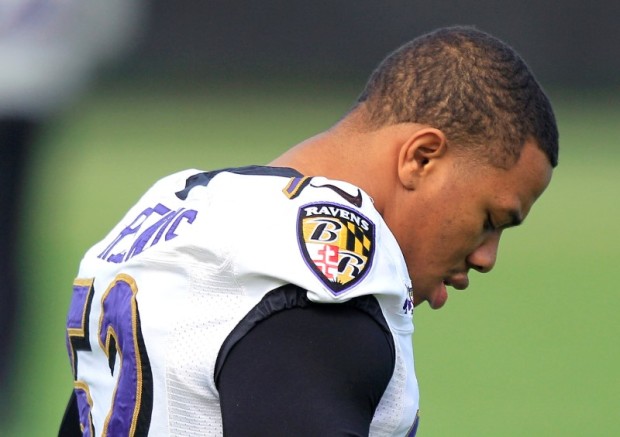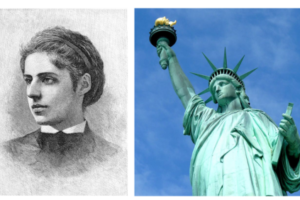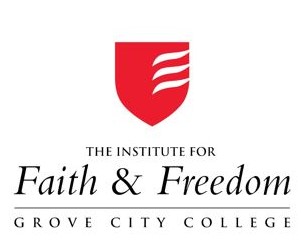The Over-Hyped NFL “Crisis”: What’s New?

The hyper-publicized NFL scandal, focusing on familial failings of some of the gridiron’s most celebrated stars, provides prophets of doom and decline with one more sign of America’s imminent collapse. According to these observations, today’s churlish and brutal professional athletes contrast unfavorably with the clean-cut, patriotic sports heroes of prior generations who took seriously their position as role-models for the nation’s youth.
This view distorts both the past and the present, romanticizing the players of prior generations while applying undeserved negative stereotypes to all stars of the present day.
A hundred years ago, baseball played the role of football today as the dominant sport in the American imagination and Tyrus Raymond Cobb counted as its greatest star. Cobb won the league batting title an unimaginable twelve times and retired with an astonishing career average of .367. He also compiled an impressive record of beatings and assaults, not just of his children and intimate partners but of baseball associates and even unsuspecting fans. In 1907, he exploded in rage when a black groundskeeper he had known for years tried to pat him on the back in a gesture deemed “inappropriately familiar.” When the unfortunate victim’s wife stepped in to try to protect her husband from a flurry of punches and kicks, Cobb proceeded to choke her until he himself was knocked cold by a good-Samaritan teammate. The next year a Detroit court found Cobb, the Tigers’ greatest star, guilty of battery in another savage attack – this one against a black laborer who had asked him not to step into wet cement. His suspended sentence did nothing to prevent Cobb from winning the batting title in 1908.
Four years later, “The Georgia Peach” leaped into the stands during the middle of a game in New York and began pummeling a fan who had been heckling him. When onlookers protested that the victim of the attack was disabled (having lost one hand, and most of the other in an industrial accident), the baseball hero shouted back “I don’t care if he got no feet!” and continued the beating.
Toward the end of Ty Cobb’s career, Babe Ruth eclipsed his achievements and became the most venerated sports hero in history despite a well-known penchant for drunkenness and womanizing. His alcohol abuse no doubt contributed to his collapse in a hotel bathroom in 1925 and his subsequent hospitalization, during which he suffered multiple and life-threatening convulsions. A sympathetic press reported that his mysterious illness was brought on by binging on hot-dogs and soda pop (including, no doubt, big gulps of more than 16 ounces) before a game.
Hack Wilson’s drinking and brawling proved far more devastating to his career than any of the excesses of Ruth or Cobb. In 1930, the 5’6”, 195 pound Chicago Cubs fire-plug set a still-untouched record with 191 runs-batted-in and a batting average of .345. A year later, his drinking had destroyed his career, especially after he assaulted a group of sports reporters and single-handedly provoked a bloody brawl on a team train to Cincinnati. Three years later he was out of baseball altogether and failing in a sad attempt to earn his living as a bar-tender, before his premature death at age 48.
In other words, no matter how appalling the off-field behavior of Ray Rice or Adrian Peterson or Jonathan Dwyer of the NFL, their violent outbursts hardly constitute a sudden or unprecedented development in the world of big-time American sports. Formidably physical young men, fueled by adrenaline, booze, or other encouragements, traveling away from home for long stretches of time, cultivating a ferocious, combative edge to reward their performance in competition and confrontation, won’t always maintain admirable levels of refinement and self control, even in the most intimate settings.
This doesn’t mean that the National Football League ought to forgive wife-beaters or child-abusers but it does suggest that the current “crisis” has been vastly overblown. What’s different about this situation isn’t the violent behavior of sports stars but the obsessive coverage by scolding media. The few seconds of elevator tape showing a presumably drunken and cruel encounter between Ray Rice and his then fiancée Janay Palmer launched the current mania by giving rare eye-witness immediacy to an unforgivable if common crime usually highlighted by after-the-fact, second-hand descriptions.
The new determination by football owners and NFL administrators to crack down on domestic violence offenders doesn’t mean that these crimes count as more frequent or flagrant than in the past; nor does it signify a higher level of sensitivity or accountability on the part of the leadership of professional sports. It’s just another example of the universal affliction best-designated as the “do-something disease”: that feverish impulse to react in some dramatic if meaningless manner to bad news with which manipulative media have titillated the public for a few breathless days or weeks. That “news” may spark enhanced ratings and somber proclamations of civilizational collapse, even when the stories under consideration qualify as stale, old, sad and largely irrelevant.
This column originally appeared at TruthRevolt.org on September 22, 2014.




















